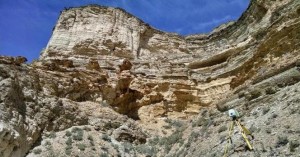 In the world of construction and engineering, accuracy is paramount. From the initial design stages to the final handover, every detail matters. One of the most critical aspects of ensuring precision throughout a construction project is accurate as-built documentation. Traditionally, this process has been labor-intensive and prone to human error. However, with the advent of laser scanning technology, as-built documentation has become more accurate, efficient, and reliable. McNeil Engineering, a leader in comprehensive design services, utilizes high-definition scanning (HDS) to provide exceptional as-built documentation that enhances construction projects.
In the world of construction and engineering, accuracy is paramount. From the initial design stages to the final handover, every detail matters. One of the most critical aspects of ensuring precision throughout a construction project is accurate as-built documentation. Traditionally, this process has been labor-intensive and prone to human error. However, with the advent of laser scanning technology, as-built documentation has become more accurate, efficient, and reliable. McNeil Engineering, a leader in comprehensive design services, utilizes high-definition scanning (HDS) to provide exceptional as-built documentation that enhances construction projects.
The importance of accurate as-built documentation
Accurate as-built documentation is essential for various reasons. It provides a precise record of the constructed environment, which is crucial for future maintenance, renovations, and extensions. This documentation ensures that the completed project aligns with the original design and specifications. It also helps identify any deviations that occurred during construction, allowing for necessary adjustments and corrections. Moreover, accurate as-built documentation is vital for compliance with local building codes and regulations, ensuring the safety and legality of the structure.
Traditional methods vs. laser scanning
Traditional methods of as-built documentation typically involve manual measurements and 2D drawings. While these methods have been used for decades, they are often time-consuming and susceptible to inaccuracies. Human error, environmental factors, and limitations in measurement tools can all contribute to discrepancies between the documented and actual conditions.
Laser scanning, on the other hand, revolutionizes the as-built documentation process. This technology uses laser beams to capture millions of data points, creating a highly accurate 3D representation of the built environment. The resulting point cloud data provides a comprehensive and detailed view of the structure, capturing even the smallest details with precision.
Benefits of laser scanning for as-built documentation
Enhanced accuracy: Laser scanning offers unparalleled accuracy compared to traditional methods. The high-density point clouds generated by laser scanners capture every aspect of the built environment, ensuring that no detail is overlooked. This level of accuracy is crucial for identifying and rectifying any discrepancies between the design and the actual construction.
Efficiency and speed: Laser scanning significantly reduces the time required for as-built documentation. Traditional methods can take weeks or even months to complete, especially for large and complex projects. Laser scanning, however, can capture an entire site within a matter of hours, providing rapid and reliable results. This efficiency allows project teams to make informed decisions quickly, minimizing delays and improving overall project timelines.
Comprehensive data: The point cloud data obtained through laser scanning provides a comprehensive and detailed view of the built environment. This data can be used to create accurate 2D drawings, 3D models, and Building Information Models (BIM), offering a versatile and valuable resource for various project stakeholders. The detailed data also aids in clash detection, ensuring that different building systems and components fit together seamlessly.
Improved communication and collaboration: Laser scanning enhances communication and collaboration among project stakeholders. The detailed and accurate data can be shared digitally, allowing architects, engineers, contractors, and clients to access the same information. This shared understanding fosters better collaboration, reduces misunderstandings, and ensures that everyone is on the same page throughout the project lifecycle.
Cost savings: While laser scanning technology may require an initial investment, it ultimately leads to significant cost savings. The enhanced accuracy and efficiency of laser scanning reduce the likelihood of costly errors, rework, and delays. Additionally, the detailed data aids in precise planning and decision-making, optimizing resource allocation and minimizing waste.
McNeil Engineering’s expertise in laser scanning
McNeil Engineering is at the forefront of utilizing laser scanning technology for accurate as-built documentation. Our team of experts leverages high-definition scanning (HDS) to provide precise and reliable data for construction projects. Here at McNeil Engineering, our commitment to delivering timely, responsive, and economical design solutions ensures that our clients receive the highest quality services.
With a comprehensive range of design services, including civil engineering, structural engineering, land surveying, landscape architecture, and consulting services, McNeil Engineering is well-equipped to handle projects of all sizes and complexities. Our use of advanced laser scanning technology sets us apart, allowing us to deliver exceptional as-built documentation that enhances the success of our construction projects.
Accurate as-built documentation is a cornerstone of successful construction projects. Laser scanning technology, with its unmatched accuracy and efficiency, is revolutionizing this critical process. McNeil Engineering’s expertise in high-definition scanning (HDS) ensures that their clients receive the highest quality as-built documentation, enhancing the success of their projects.
If you are looking to enhance your construction projects with precise and reliable as-built documentation, consider partnering with McNeil Engineering. Our comprehensive design services and commitment to delivering timely, responsive, and economical solutions make us the ideal choice for your next project. Visit McNeil Engineering to learn more about their services and how they can help you achieve your project goals with advanced laser scanning technology.








